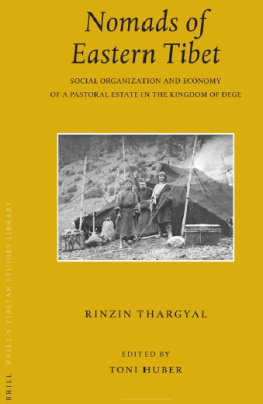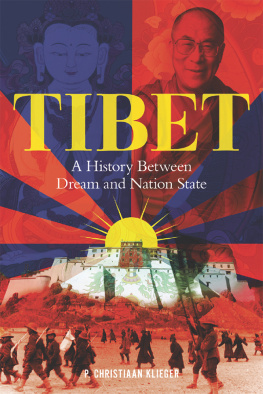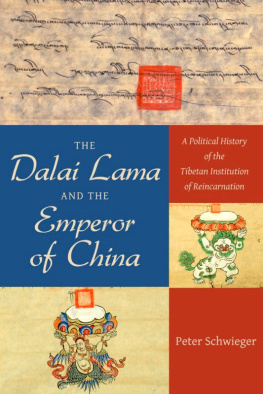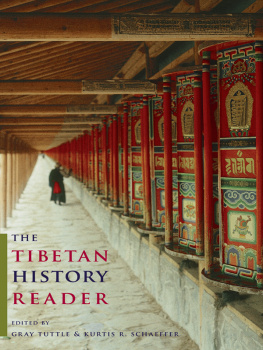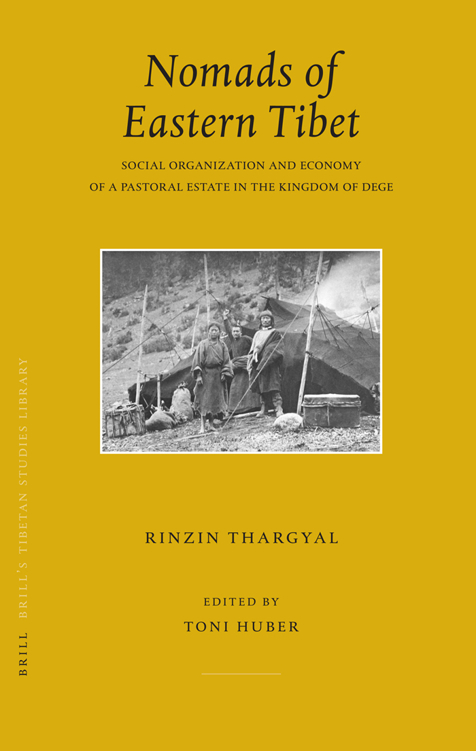Toni Huber
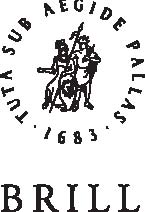
LEIDEN BOSTO N
On the cover: The J Lama and his parents in front of their yak hair tent, Kham, ca. 190 (photograph by Albert L. Shelton, courtesy of The Newark Museum) . This book is printed on acid-free paper . A C.I.P. record for this book is available from the Library of Congress .
ISSN: 1568-618 ISBN: 978 90 04 15813
Copyright 2007 by Koninklijke Brill NV, Leiden, The Netherlands . Koninklijke Brill NV incorporates the imprints BRILL, Hotei Publishing , IDC Publishers, Martinus Nijhoff Publishers and VSP .
All rights reserved. No part of this publication may be reproduced, translated, stored i n a retrieval system, or transmitted in any form or by any means, electronic, mechanical , photocopying, recording or otherwise, without prior written permission from the publisher .
Authorization to photocopy items for internal or personal use is granted by Koninklijke Brill N V provided that the appropriate fees are paid directly to The Copyright Clearance Center , 222 Rosewood Drive, Suite 910, Danvers, MA 01923, USA . Fees are subject to change .
printed in the netherlands
TABLE OF CONTENT S Authors Preface................................................................................... vi i Editors Preface ..................................................................................... i x List of Illustrations ................................................................................ x i Editors Introduction: The Anthropology of Tibe t and the First Tibetan Anthropologist s by Toni Huber......................................................................................... Chapter One Introduction.................................................................. 1 Chapter Two The Genesis of Zilphukhog ........................................ 3 Chapter Three Labour Service.......................................................... 4 Chapter Four Animal Husbandry...................................................... 7 Chapter Five Trade and Peripheral Incomes .................................... 9 Chapter Six Strategic Transhumance.............................................. 11 Chapter Seven Household Organization......................................... 12 Chapter Eight Marriage and Kinship.............................................. 14 Chapter Nine Birth and Death......................................................... 17 Chapter Ten The Political Environment......................................... 18 Chapter Eleven Social Organization............................................... 19 Bibliography ....................................................................................... 20 Index ................................................................................................... 21
AUTHORS PREFACE
Publishing a work that has lain fallow for over two decades requires a word of explanation. Professor Per Kvrne had earlier encouraged me to publish it, for which I thank him. However, debilitating illnesses thwarted my initiative in doing so. Professor Toni Huber overcame the impasse by taking the overall responsibility of publishing my research. I am profoundly grateful to him for editing and up-dating it where he deemed it necessary. Without his generosity, the book would not have seen the light of day. I also appreciate that he has placed my research in its proper context by writing his Introduction, and also for persuading Brill to publish the book.
Reminiscing on my fieldwork, I would once again like to express my gratitude for the role played by my informants, some of whom have now passed away. Their vivid memories of their erstwhile way of life render them the legitimate authors of this book. I will not forget their candour and integrity, qualities that enhanced their own eloquence in narrating their proud past.
I am grateful for the generous fieldwork grants I received from the Norwegian Research Council for Science and the Humanities and the Scandinavian Institute of Asian Research during the early 1980s. Furthermore, I am deeply indebted to Professor Fredrik Barth, my supervisor in the Institute of Social Anthropology at the University of Oslo. He offered invaluable guidance and I utilized certain aspects of his theoretical corpus, which I found highly enlightening and applicable to the analysis I have made. My gratitude also goes to Professor Arne Martin Klausen, who acted as my temporary super visor. My thanks go to the academic staff of the Institute of Social Anthropology for introducing me to the subject, and also to my fellow students for their positive criticism of my fieldwork project and of my thesis when it was in its formative stages.
Finally, I would like to thank my wife Pema, whose support for my fieldwork in Nepal was indispensable, while her fluent Nepali made the research sojourn much easier.
Rinzin Thargyal Oslo, October 2006
EDITORS PREFACE
I have published Rinzin Thargyals manuscript so that its unique data on pre-modern pastoralism in Dege will become widely available to both scholars and general readers. I also consider the work an interesting cultural artifact in its own right. It reveals the ways in which a native anthropologistin this case, an exiled one with an acquired intellectual framework very different from that of his own communitypresents and analyzes his society of origin within two decades of its demise. I imagine that both of the above points will also render Rinzins work of considerable interest to current and future Tibetan readers as they reflect upon their own modern history. With this in mind, my editorial policy has been to preserve Rinzins own presentation and arguments, even though the possibility is always there to update them from the perspective of our current scholarship.
In addition to providing an introductory essay, the extent of my role as editor has entailed the following: Editing the entire text in terms of style, technical consistency, and arrangement of the material; providing the occasional Editors note in the footnotes for clarification, and also to direct readers to literature and debates about certain topics which have appeared since Rinzin undertook his research; standardizing the phonetic equivalents used for Tibetan words, and their Romanization; redrafting Rinzins original hand-drawn figures and providing several new maps; adding photographs from the relevant historical period and geographical area; and compiling an index of the main text. The finished text was produced in full consultation with Rinzin, although I myself take responsibility for any errors that may remain.
Concerning the Romanization of Tibetan words herein, since there is no standard or widely accepted system for representing Tibetan pronunciation, simple phonetic equivalents for Tibetan words have been used throughout the main body of the text and the notes. Correct written forms of Tibetan proper names, Romanized according to the widely accepted Wylie (1959) system, are given in parentheses following each name as they are listed in the Index, for example, Trampa Dapa (Gram pa mda pa). Correct Wylie spellings of Tibetan terms and expressions (all in italics ) are given in parentheses after the first occurrence of such words in the main text, for instance, lhongten ( slong rten ). When writing Wylie, I have opted to use capital A to represent the last letter of the Tibetan alphabet. Standard spellings for a few local terms and colloquial expressions in the Khampa dialect of the Dege region are unknown, and these have been left in simple phonetic transcription when they occur.

